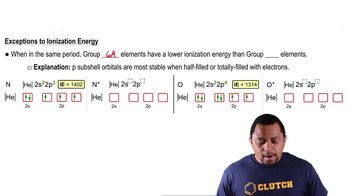Here are the essential concepts you must grasp in order to answer the question correctly.
Oxidation States
Oxidation states, or oxidation numbers, indicate the degree of oxidation of an atom in a compound. They help in understanding electron transfer during chemical reactions. For elements in group 5A, such as nitrogen and phosphorus, the oxidation state can vary based on the compound's structure and bonding, influencing the compound's reactivity and properties.
Recommended video:
Chemical Formulas
A chemical formula represents the composition of a compound, showing the types and numbers of atoms present. For example, nitrous oxide is represented as N2O, indicating two nitrogen atoms and one oxygen atom. Understanding how to derive and interpret chemical formulas is essential for identifying compounds and their properties.
Recommended video:
Group 5A Elements
Group 5A elements, also known as the nitrogen group, include nitrogen, phosphorus, arsenic, antimony, and bismuth. These elements exhibit varying oxidation states and can form a range of compounds, such as acids and oxides. Recognizing their common oxidation states and typical compounds is crucial for predicting chemical behavior and reactivity.
Recommended video:
Group 6A vs. Group 5A Elements
 Verified step by step guidance
Verified step by step guidance

